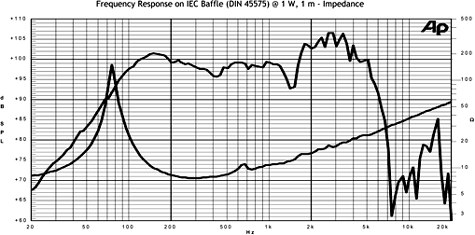I have been reading about speakers, but most of the info deals with physical design of the cab, or cross-over design.
My question deals, primarily, with a single 12 inch, guitar speaker.
What accounts for the difference in frequency response.?
Just for example.....
Eminence:
Governor
and
Wizard
All else equal, why do they reproduce the same frequencies at different amplitudes.?
Is it the type of paper, voice coil, ribs in the cone.?
Thank You
My question deals, primarily, with a single 12 inch, guitar speaker.
What accounts for the difference in frequency response.?
Just for example.....
Eminence:
Governor
and
Wizard
All else equal, why do they reproduce the same frequencies at different amplitudes.?
Is it the type of paper, voice coil, ribs in the cone.?
Thank You
 .... but are in fact much rougher :
.... but are in fact much rougher :





Comment